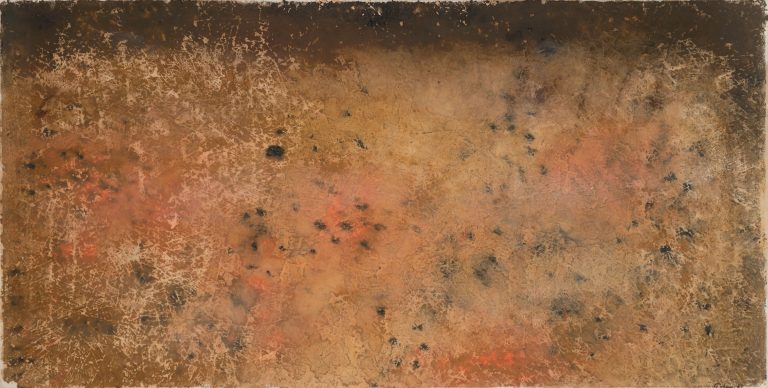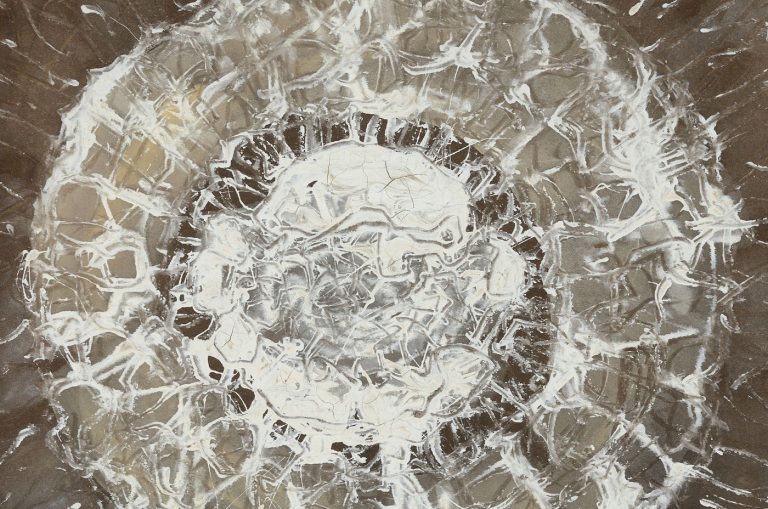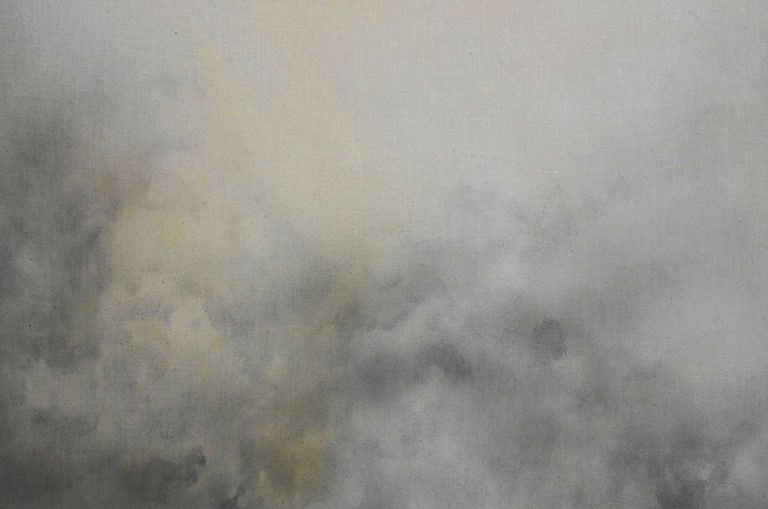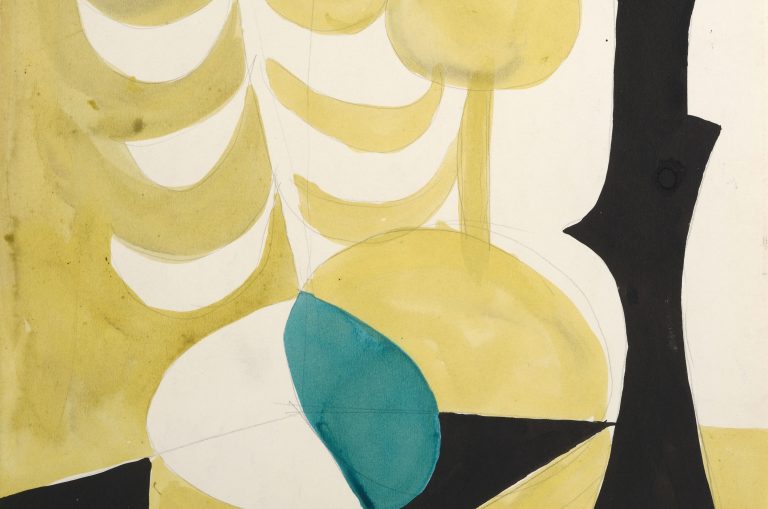Mark Tobey took courses at the Art Institute of Chicago, then moved to New York in 1911 and earned his living as a portrait artist and a draughtsman in the fashion industry. Following his conversion to the Baha’i universal religion, his work took a new direction and from then on his artistic career is closely linked to his spiritual evolution. In 1922, he moved to Seattle and taught art at the Cornish School. His meeting with the Chinese painter Teng Kuei, who introduced him to oriental calligraphy, influenced his work. In 1925, he moved to Paris and traveled through Europe and the Middle East. His stay at the Kyoto Zen monastery was decisive for the creation of his iconic White Writings. He also discovered Persian and Arabic writing. Returning to Seattle, he co-founded the Free and Creative Art School, and his works were presented by Alfred Barr at the Museum of Modern Art in New York.
In 1934, he left for China, where he spent time at the home of Teng Kuei before going to study painting and calligraphy in Japan. Mark Tobey exhibited for the first time at the Marian Willard Gallery in 1944. The following year, in 1945 Jeanne Bucher traveled to the United States and encountered Mark Tobey and brought back to France some works by the American artist she intended to present in Paris. But illness took her life in 1946 and ten years later, Jean-François Jaeger organized the first exhibition of Mark Tobey in Europe, in collaboration with the Willard Gallery in New York. In 1951, the Whitney Museum in New York dedicated a solo exhibition to his work. Upon invitation of Joseph Albers, Tobey spent three months as invited speaker at Yale University. In 1958, Tobey obtained the Grand Prize of painting of the Venice Biennale and in 1961, the Museum of Decorative Arts of Paris dedicated, its first retrospective to an American artist. Until his death in 1976, Tobey would travel unceasingly while his work was presented by numerous prestigious institutions.
Jeanne Bucher Jaeger Gallery, which has exhibited the artist’s works since the 1950s, presented a tribute to Mark Tobey at the FIAC in Paris in 2010. He was recently the subject of a major retrospective entitled Mark Tobey : Threading Light at the Peggy Guggenheim Collection in Venice and at the Addison Gallery of American Art in Andover. A personal exhibition was dedicated to him at the Pace Gallery in New York in 2018.
On the occasion of the 130th anniversary of the birth of Mark Tobey (1890 – 1976), the gallery, in collaboration with the Centre Pompidou and the Collection de Bueil & Ract-Madoux, has paid tribute to the artist by devoting an important monographic exhibition to him, presenting some 40 essential works. The first major exhibition in France since the one dedicated to him in 1961 – nearly 60 years ago – at the Musée des Arts Décoratifs. On the occasion of this exhibition, a catalog was published by Gallimard.
artist agenda
downloads
Tempera on paper
24 × 25,8 in
Photograph by Jean-Louis Losi
Tempera on paper
8,1 × 12,4 in
Photograph by Jean-Louis Losi
Tempera on paper
15,8 × 11,8 in
Photograph by Jean-Louis Losi
Tempera on paper
9,1 × 12,4 in
Photograph by Jean-Louis Losi
Tempera on paper
4,9 × 6,7 in
Photograph by Jean-Louis Losi
Monotype on paper
39 × 19,7 in
Monotype on paper
19,1 × 39 in
Photograph by Jean-Louis Losi
Tempera on paper, mounted on pannel
26,4 × 19,1 in
Photograph by Jean-Louis Losi
Monotype
40,2 × 20,5 cm
Tempera on paper
24 × 25,8 in
Photograph by Jean-Louis Losi
Tempera on paper
8,1 × 12,4 in
Photograph by Jean-Louis Losi
Tempera on paper
15,8 × 11,8 in
Photograph by Jean-Louis Losi
Tempera on paper
9,1 × 12,4 in
Photograph by Jean-Louis Losi
Tempera on paper
4,9 × 6,7 in
Photograph by Jean-Louis Losi
Monotype on paper
39 × 19,7 in
Monotype on paper
19,1 × 39 in
Photograph by Jean-Louis Losi
Tempera on paper, mounted on pannel
26,4 × 19,1 in
Photograph by Jean-Louis Losi
Monotype
40,2 × 20,5 cm


















